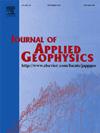基于多任务深度学习的重力异常同时估计基底深度和密度对比
IF 2.2
3区 地球科学
Q2 GEOSCIENCES, MULTIDISCIPLINARY
引用次数: 0
摘要
提出了一种多任务深度学习(DL)方法,从重力场异常中同时估计基底深度和密度对比。该方法基于一种特殊设计的混合结构,该结构由卷积神经网络分支和多层感知器分支组成。这种混合架构充分利用了多任务深度学习的优势,可以同时估计基底深度和密度对比度,其中输入是重力图。在训练阶段,从全球盆地数据集中纳入有用的统计先验信息。我们的想法是,基于这种数据集的学习有助于将解决方案限制在有限的域中,从而导致对基底深度和密度对比度的合理估计。我们利用深度卷积生成对抗网络(DCGAN)基于全球盆地目录生成高质量的基底深度图。初步的真实基底图来源于对全球盆地内沉积物数据的重新插值和非标准坐标变换,并通过训练好的DCGAN架构生成更多的附加基底样本,从而形成我们的数据集。将该方法应用于合成数据集和两个实际案例,验证了该方法的可行性和有效性。结果表明,我们的深度学习架构不仅对估计的基底模型有很好的性能,而且对密度对比也有很好的性能。该方法可作为实际应用的有效工具,特别是在缺乏约束信息的复杂实际情况下。本文章由计算机程序翻译,如有差异,请以英文原文为准。
Simultaneous estimation of basement depth and density contrast by gravity anomaly via multi-task deep learning
We propose a multi-task deep learning (DL) method to simultaneously estimate the basement depth and the density contrast from gravity field anomalies. The method is based on a specially designed hybrid architecture, which comprises a convolutional neural network branch and a Multilayer Perceptron branch. This hybrid architecture fully leverages the benefits of multi-task DL, enabling simultaneous estimation of basement depth and density contrast, where the input is a gravity map. In the training phase, useful statistical prior information is incorporated from a global basin dataset. Our idea is that the learning based on such dataset helps to restrict the solution to a limited domain, so leading to a reasonable estimation of the basement depth and the density contrast.
We utilize a Deep Convolutional Generative Adversarial Network (DCGAN) to generate high-quality maps of basement depths based on a global catalog of basins. The preliminary real basement maps originate from the re-interpolations and nonstandard coordinate transformations of the sediment data inside the global basins, and more additional basement samples are generated by the trained DCGAN architecture, thereby forming our dataset.
We apply the method to synthetic dataset and to two real cases, thus demonstrating the feasibility and effectiveness of our DL method. The results show good performance of our DL architecture not only for the estimated basement models, but also for the density contrast. The method candidates as a valid tool for practical applications, especially when there is a lack of constraint information in complex real cases.
求助全文
通过发布文献求助,成功后即可免费获取论文全文。
去求助
来源期刊

Journal of Applied Geophysics
地学-地球科学综合
CiteScore
3.60
自引率
10.00%
发文量
274
审稿时长
4 months
期刊介绍:
The Journal of Applied Geophysics with its key objective of responding to pertinent and timely needs, places particular emphasis on methodological developments and innovative applications of geophysical techniques for addressing environmental, engineering, and hydrological problems. Related topical research in exploration geophysics and in soil and rock physics is also covered by the Journal of Applied Geophysics.
 求助内容:
求助内容: 应助结果提醒方式:
应助结果提醒方式:


